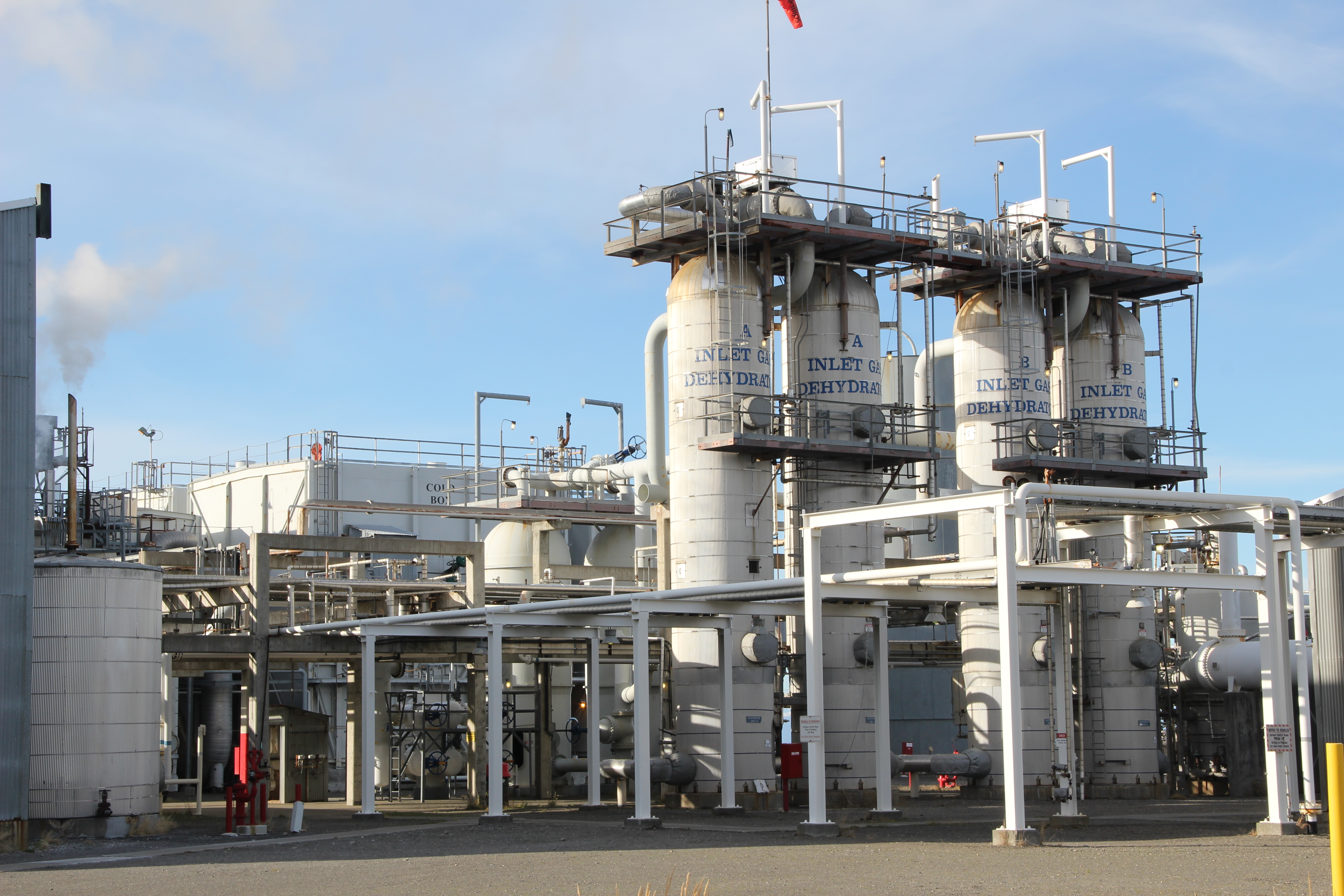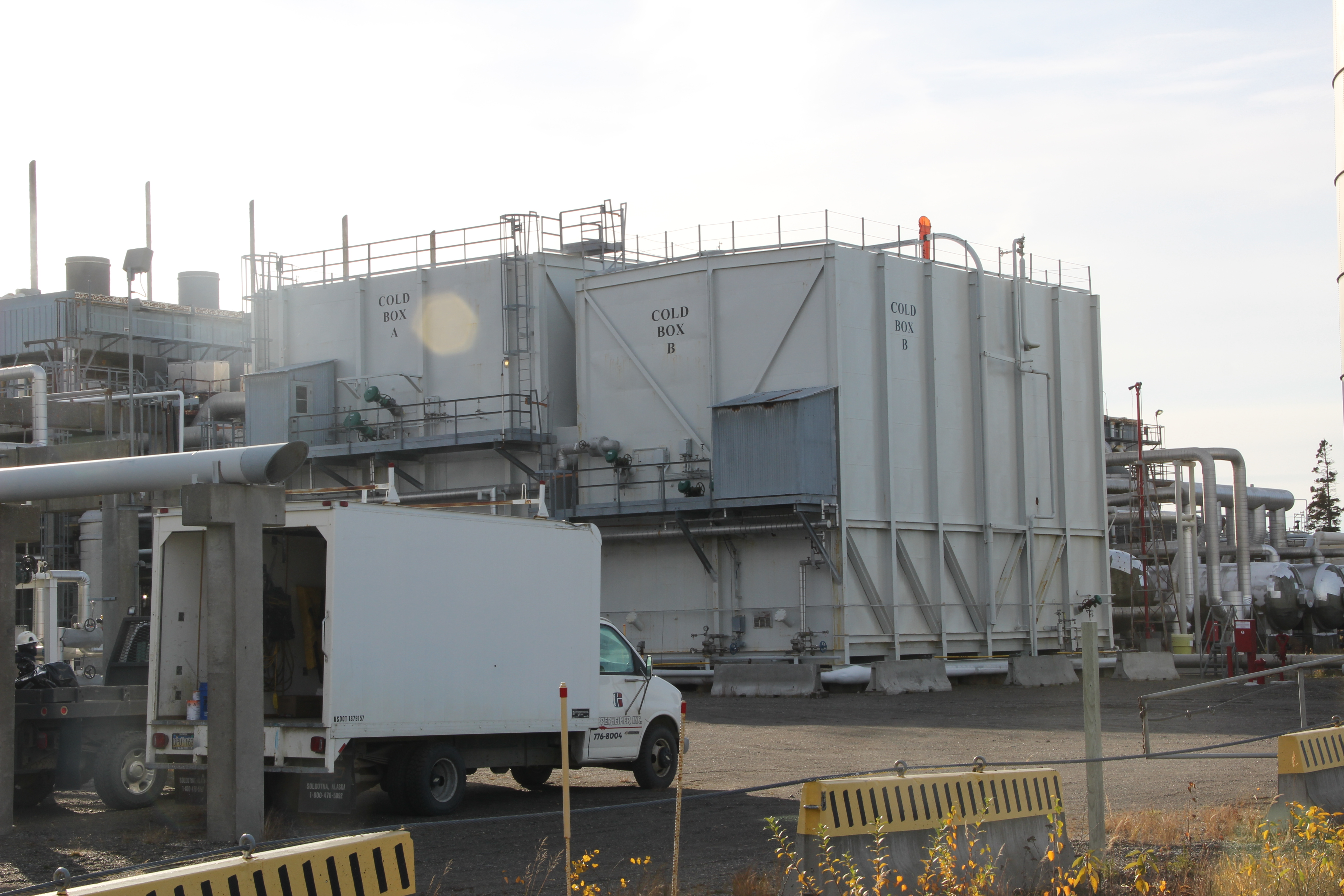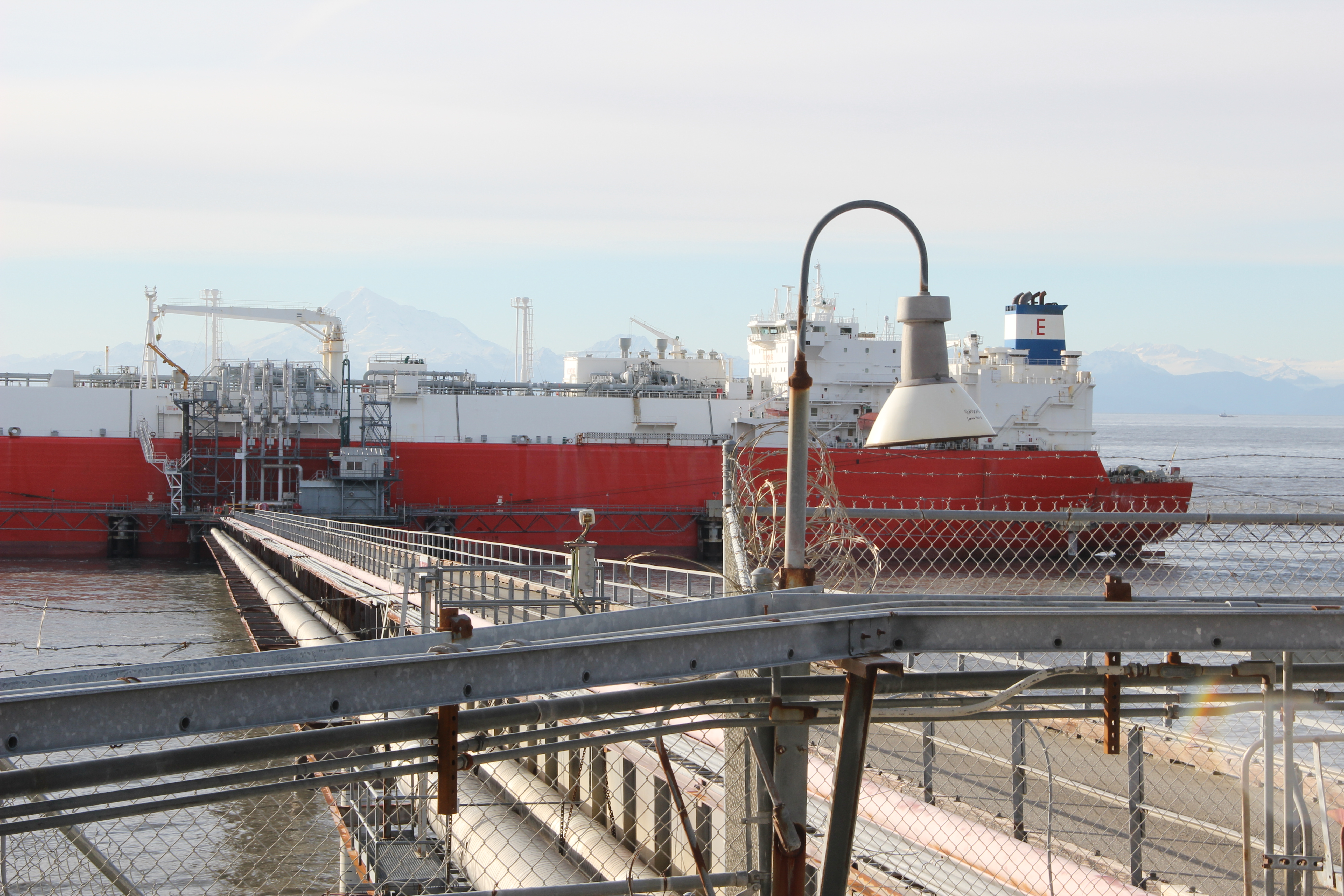
Lawmakers gathered over the weekend in Juneau for the start of a special session on the Alaska LNG project, which would carry natural gas from the North Slope down to the Kenai Peninsula for export.
If it goes forward, it’s expected to cost a whopping $45 to $65 billion — and roughly half of that cost would be a giant liquefaction plant, where natural gas is turned into a liquid.
In the second half of our series breaking down the project, I visited an LNG plant to find out what all the fuss is about.
The Alaska LNG project calls for a giant plant on some 600 acres in Nikiski.
And as it happens, there’s already a liquefaction plant there — ConocoPhillips’ Kenai LNG plant. Right now, it’s the only plant in North America that exports LNG — and it’s been operating in essentially the same way since 1969.
Plant manager Ray Chumley gave me a driving tour. It’s a modest looking operation — like most hydrocarbon processing plants, it looks essentially like a series of pipes and holding tanks. It’s not small, but it’s nothing close to the plant required for the Alaska LNG project. At full capacity, this plant can process 1.3 million tons per year. The Alaska LNG project hopes to produce up to 20 million tons of liquefied natural gas per year.
But it’s still the same basic concept.
The gas for the Kenai plant comes from operations in Cook Inlet — on a clear day you can see the platforms out on the water.
First the gas goes through a drying process — it pulls out any last remaining liquids, any carbon dioxide. What you’re left with is mostly methane.
And that methane then goes into the proverbial black box — except in this case, it’s a white box. Actually, two white boxes, with some very technical names.

The boxes are labeled “Cold Box A” and “Cold Box B.” What’s happening in there?
“Well, that is our proprietary process for ConocoPhillips,” Chumley said. “So that is actually where the liquefaction happens. I can’t go into detail on what the process is, but that is where the liquefaction happens.”
Chumley can’t disclose because ConocoPhillips is one of the few companies in the world that has this technology. But it’s essentially a giant refrigerator. And it chills the gas down to -260 degrees Fahrenheit. As the gas cools, it transforms it from a gas to a liquid and shrinks down, becoming 600 times smaller.
The end result looks pretty familiar.
“If you pour LNG in a glass, in a clear glass, you would be very hard-pressed to tell the difference between that and water. It’s that clear. You could see right through the glass,” Chumley said.
But if you touched it, “You can imagine touching something at -263 degrees. It would freeze your finger. Absolutely,” Chumley said.
Once it leaves the box, the gas has to stay that cold. That means all the pipes and holding tanks have to be made from materials that can withstand that kind of temperature.
“Carbon steel won’t handle that. It just turns brittle. If you dipped a 1-inch piece of carbon steel pipe in a glass of LNG, you can take a hammer and just shatter that piece of pipe,” Chumley said.
And it’s one reason that liquefaction plants are so expensive. Not only do you have to buy the special technology to chill the gas into a liquid, you also have to build your plant so it can handle the cold. Everything after the cold box is the “cryogenic” side of the plant. Yep, cryogenic. As in real cold.
From the cold boxes, the LNG is piped into three tall storage tanks. But, again, these are nothing compared to what’s proposed for the Alaska LNG project. These three tanks are equal to one ship load, and the Kenai LNG plant loaded about six ships this year. The Alaska LNG project hopes to load 15 to 20 ships a month.

One of those ships is sitting at the end of the jetty. There’s a really nice view from the plant. The ship sits with Cook Inlet behind it, framed by the white peaks of the Alaska Range.
This ship is essentially a floating thermos — specially designed to transport the LNG across the Pacific to Japan or China.
And that’s the whole point of liquefying it. If the gas were being transported over land, it could just be fed into a pipeline, in gas form. But to fit it in a ship or a train or a truck it has to shrink down to liquid form.
Once it arrives in Asia, it’s warmed up and turned back into gas. And then it enters the pipeline system there — going to power factories to heat homes and businesses in, say, Tokyo.
And it’s decisions in Tokyo and elsewhere in Asia that will decide if this project ever goes forward. For now, the project is in the early design and planning stages. There likely won’t be a decision on whether to break ground until 2018 — and that will depend on whether there’s demand for the gas across the Pacific.
If there is and all goes according to plan, the Alaska LNG project would ship its first gas in 2024.
